Mobile: 07748 563747
Office: 01344621625
Email: info@gforceascot.co.uk
Email: info@gforceascot.co.uk
Office: 01344621625
Mobile: 07748 563747

L.E.D Specialists

LED
What is an LED?
Basically new light fittings or new lamps that fit into your existing light fittings. Often as simple as changing a light bulb, they can be just as bright as your old ones, but last 20 times longer and use 90% less energy.
Bulbs? or Lamps?
History lesson time. Often mistakenly referred to as ‘bulbs’, the first ‘lamps’ were invented in England by Joseph Swan in the 1870’s, and perfected soon after in America by Thomas Edison who used the familiar ‘pear shape’. Having served us well for over 150 years, that familiar shape remains today.
Bulbs ‘grow’ Lamps ‘glow’

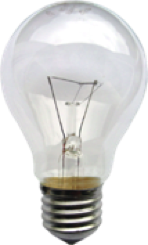
What does LED mean?
Rapid Improvements in technology
The first LED lamps used as many tiny lamps as could be tightly packed into the lamp, seen in this photo - they appeared in mid 2000’s and advertised how little power they used (1.5 Watts) and how long they lasted (mine are still going). But NOT how bright they are …. only suitable for a ‘night light’ or decorative light in glass fronted cabinet.
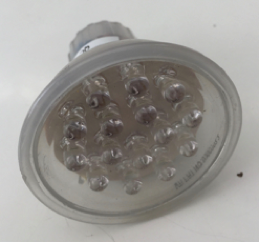
Tried them, didn't like them? Think again…
Looking back, the first ones weren't great, they were not bright enough and were expensive, looked strange, couldn't be dimmed, sometimes buzzed and even interfered with DAB radio signals
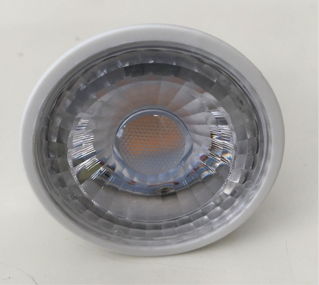
The latest models look more like the ‘halogen’ lamps they replace. The design has changed from lots of little LEDs, to one larger, brighter ‘COB (chip on board) lamp’. They now outperform the lamps shown above in brightness and have up to a 30,000 hour life span.
Often available in three colours of white.
Warm white (yellow and cosy) The most popular and traditional look, ideal for a lounge or bedroom.
Cool white (a bluer white) A brighter pure light ideal for reading/working in office, classroom, workshop or study. Proven to cause less eye strain when reading papers or computer screens. Ideal at home in studies, kitchens and bathrooms
Daylight (sometimes known as Natural White) is also available in some ranges, but they are not as common and are only critical where colours need to be seen as they would in natural light, such as in a hairdressers, or shop selling clothes, fabrics, wall paper, paint or tiles etc.
Dimmable options are available in most designs, sometimes at a slightly higher price and MAY be compatible with your existing dimmer switch
Do they really save me money?
Yes, in many ways, saving up to 90% on your electricity bills and 20 trips to the shops to buy more lamps and perhaps even having to pay someone to install them. Also they do not get hot and are often ‘Fire Rated'
The lamps typically have a life span for 20 times more than the lamps you replace.
Cheaper to Run. Really?
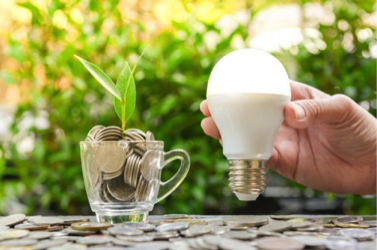
Compared to the traditional tungsten filament or halogen lamp, LEDs use up to 90% less power to give around the same light output. In simple terms a 6 Watt LED lamp can produce the same light as an old 60 Watt lamp, or a 30 Watt LED flood light will produce a similar light to a 300 Watt tungsten flood light.
How? Our old ‘GLS’ (General Lighting Service) lamp used 97% of its electricity to make a ‘tungsten’ filament red hot and then give off light.
Savings can still be made against the ‘Energy Saving CFL’ lamps. These are the ‘Compact Fluorescent Lamps’ that take an age to get to their full brightness, and can’t be dimmed.
Safer?
Most people will be familiar with the older lamps becoming black, lamp holders or shades becoming brittle or brown due to the heat, or a burning smell from dust as lights are turned on, even steam rising from flood lights turned on in winter. All these problems can be instantly solved by ‘making the switch’
Heat rises and if the original halogen (non fire rated) ‘down light’ fittings are installed close to wooden ceiling joists, in wooden ‘lath and plaster’ ceilings.
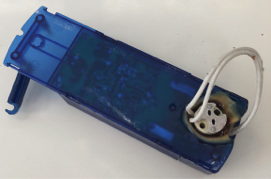
Sometimes a burnt out transformer or lamp holder cause house fires.
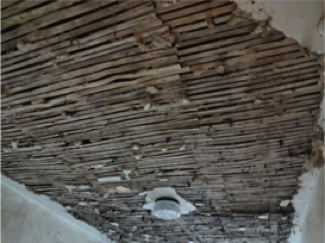
A lath and plaster ceiling, only found in older houses, this traditional method of attaching wooden laths between joists then covering with plaster. DIY installers have often fitted down lights into ceilings such as these, ignoring the fact that the flammable wooded strips are touching the lights.
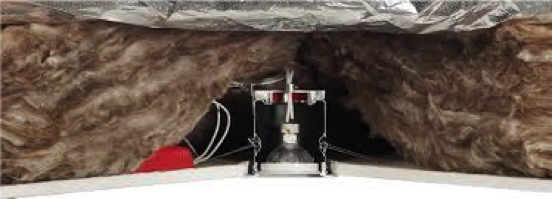
Other problems are caused by covering hot lights with thermal loft insulation, boards, or even the cardboard box full of Christmas decorations.
This is an example of how NOT to do it. The light fitting is NOT fire rated. But worse still it has then been covered with thick loft insulation
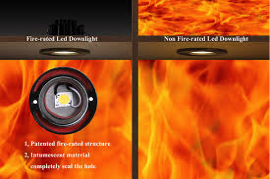
If a fire were to occur in a room with holes cut into the ceiling for down lights, these holes allow an easy path for the fire to quickly spread to other floors of the property. The building regulations require ‘Fire rated’ fittings to be used between floors. These will withstand the fire as long as the original fire rated ceiling would have in its original condition
How it should be done
The latest ‘Fire rated’ sealed LED downlight fittings can be safely covered with insulation.

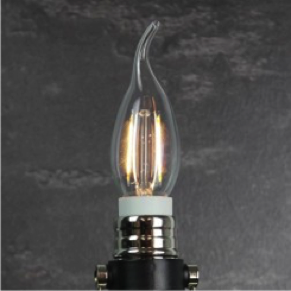
Amazing lamp life - ‘Fit and Forget’
Dependant on the make and model, average life expectancy of many LED units are 30,000 hours of use. Warranties can be 3 - 7 years depending upon the brand. Often in shop windows LEDs are used for display lighting 24 hours a day year after year.
LEDs come in all sorts of designs, shapes and sizes and colours.
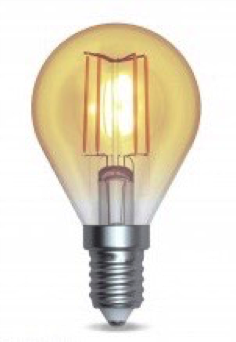
Due to being electronic devices, they can be almost any colour you like, some change colour to give a fun atmosphere for a bar or restaurant, some have clear glass so you can see the ‘filament’ for a traditional warm glow. All shapes, sizes and ‘base/cap types’ as shown here:
Cap types for ‘spot lights’
GU10 and G9 being 240 Volt units with no need for any transformers or LED driver that are required with the other 12Volt units shown here.

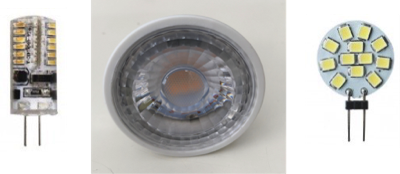
Cap / base types for Bayonet or Edison Screw

A lot to consider? Just ask
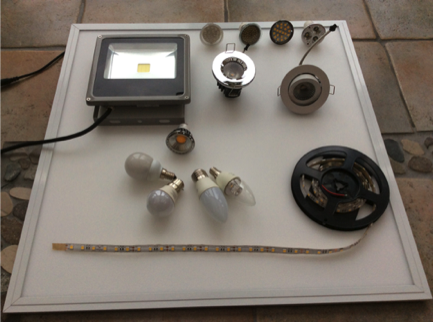
A sample of various LED lamps and LED light fittings recently fitted.
You can see a flood light, bathroom rated chrome shower light, a white fire rated adjustable light, and various lamps in shapes from the ‘golf ball’, ‘candle’ and traditional pear shape. All available with opaque or clear glass with warm or cool white colour and dimmable options.
All are displayed on a flat LED lighting panels to fit in a false ceiling. Also
shown is a strip light. These can be fitted under kitchen cupboards or decking steps and bent or cut to length as required.
You can use LEDs everywhere? NO!
There are very few places where an LED can’t replace your existing lights…
Exceptions to the rule.
Oven or Cooker Lamps
LEDs don't like heat, so are not suitable to replace the light inside an oven due to the excessive temperature causing damage to the electronic components.
Aquarium, Vivarium and Specialist Heaters / Driers
LEDs don’t get hot and waste energy, so another specialist area where LEDs can’t be used is when the heat from traditional lamps is actually essential. Examples include heating a reptile tank or the infrared light used in industry for heating, drying or for the treatment of sport injuries. Another exception is the ultra violet (UV) light above aquariums and fish tanks

For more information, or to book a survey of your home / business or
to arrange an estimate, contact me today and start saving money tomorrow.
The initials are an abbreviation of 'Light Emitting Diode'. LEDs are the latest thing in lighting. These small electronic light producing components have come a long way in a very short time. Only a few years ago they were tiny and produced a small glow often as a ‘standby light’ on a TV screen now they are found everywhere from car headlamps to lighting our homes and offices. Almost yearly the products have been getting brighter, smaller and cheaper as the older style of lights are phased out by government energy saving laws banning the manufacture or import of the traditional lamps.

